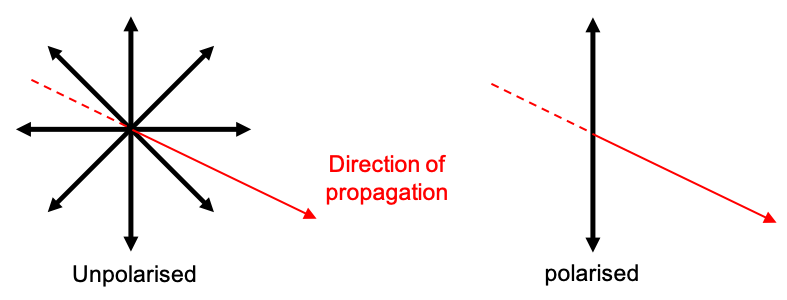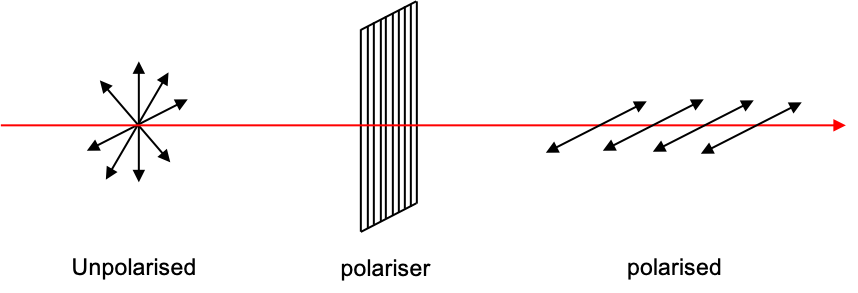Light polarisation is the classical description of oscillation directions of electromagnetic waves. Light from the sun or incandescent lamps is emitted by a large number of atoms, each producing oscillations in random directions at any given time. Since the oscillations at any point fluctuates rapidly and randomly, we call this unpolarised light (see diagram below).


Question
Do the arrows in the above diagram represent electric field vectors or magnetic field vectors?
Answer
It is more convenient, and in many cases more practical, to define polarisation of light in terms of the oscillation of electric field vectors (a magnetic field does not exert a force on charges at rest).
Polarised light can be produced by passing unpolarised light through a polariser. One of the most widely used polarisers is the H-sheet, which is a sheet of polyvinyl alcohol that is heated and stretched to the extent that the polymeric chains are aligned in a particular direction. Long chains of iodine, which are parallel to the alcohol chains, are then formed when the sheet is dipped in iodine solution. As the valence electrons in the iodine chains are only mobile along the chains, light that is polarised parallel to the chains is absorbed, while light that is polarised perpendicular to the chains is transmitted (see diagram below).


Question
What happens when light, which is polarised at an angle to the iodine chains where
, passes through the H-sheet?
Answer
The polarised light before passing through the H-sheet can be resolved into a component that is parallel to the iodine chains and one that is perpendicular to the iodine chains. Therefore, the transmitted light is polarised perpendicular to the chains.